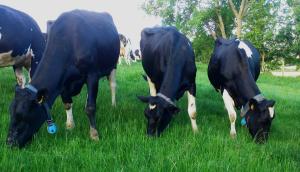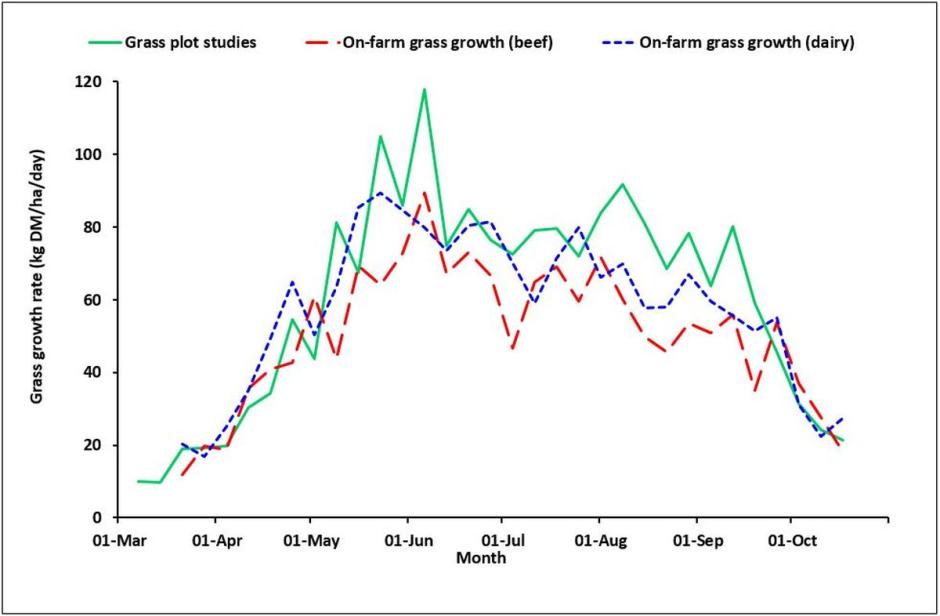AFBI Kickstart the 2018 Grazing Season
Date published:
After a challenging season in 2017 and difficult start to 2018, Dr Suzanne Higgins and Dr Debbie McConnell from AFBI highlight that it is now timely to refresh the lessons learnt from 2017 and plan ahead for grazing in 2018.

A recap of 2017
During 2017 AFBI and AgriSearch monitored grass growth conditions both on plots and commercial farms, as part of the GrassCheck project www.agrisearch.org/grasscheck. Grass growth at AFBI Hillsborough and CAFRE Greenmount highlighted good growing conditions in 2017, with annual yields of 13.8t DM/ha, a 23% increase from the long-term average. The season was buoyed by particular good growth rates in mid-summer with an additional 1.8t DM/ha produced during June, July and August (Figure 1).

Prepare your soil for 2018
High rainfall and flooding in 2017 has resulted in many soils being waterlogged, damaged or vulnerable to compaction. AFBI research has shown that soil compaction can reduce grass yields by up to 25% and can result in permanent damage to soil structure. As soon as possible, walk your grazing platform to earmark areas for remedial action such as aeration or reseeding. Also consider field infrastructure since having a good network of fencing and tracks will help ensure easy access to grazing and minimise tractor traffic across fields.
Where ground conditions are good, it is important to prepare now in order to take maximum advantage of early spring growth potential. Applying an early spring dressing of slurry (2000 gal/acre) is a great source of nutrients, particularly nitrogen (N), phosphorus (P) and potassium (K), and can meet a substantial proportion of grass nutrient requirements in the early growing season. AFBI research has also shown that applying slurry by dribble bar or trailing shoe technology in spring can improve grass yields by up to 25% by increasing the amount of nitrogen available to plants. This technique also reduces ammonia emissions when spreading slurry compared with splash plate systems.
Alongside, N, P and K it is also important to consider early applications of sulphur to ensure optimum grass yields. AFBI research has shown sulphur deficiency is common in Northern Ireland and can result in yield losses of 30%. For grazed fields, 20 – 30 kg SO3/ha should be applied in spring in a sulphur-containing fertiliser, when up to 100 kg N/ha is applied.
Making the most of spring grass
Spring grass is a valuable feed source for dairy cows and achieving early turnout will stimulate grass growth, improve grass quality in later rotations and reduce feed costs in spring. Previous studies undertaken at AFBI have shown that giving cows access to grazing for as little as two hours per day in March can lower silage intakes by 3.5 kg DM/cow/day, reducing pressure on silage supplies. At the same time, milk yields increased by 2.9 litres/cow/day allowing cost savings of £0.86/cow/day or £4000 for a farmer milking 150 cows during the month of March. Again, infrastructure is key to maximising these cost savings. Creating temporary grass laneways, backfencing and having multiple entrances to paddocks are all useful techniques to help maximise grass utilisation at any stage of the growing season.